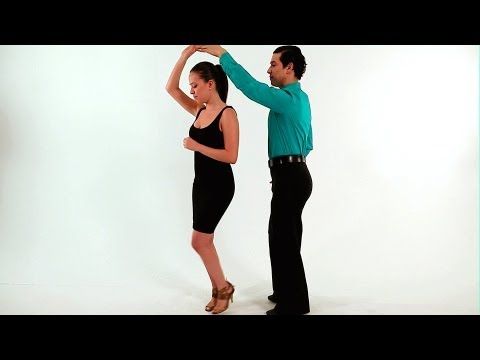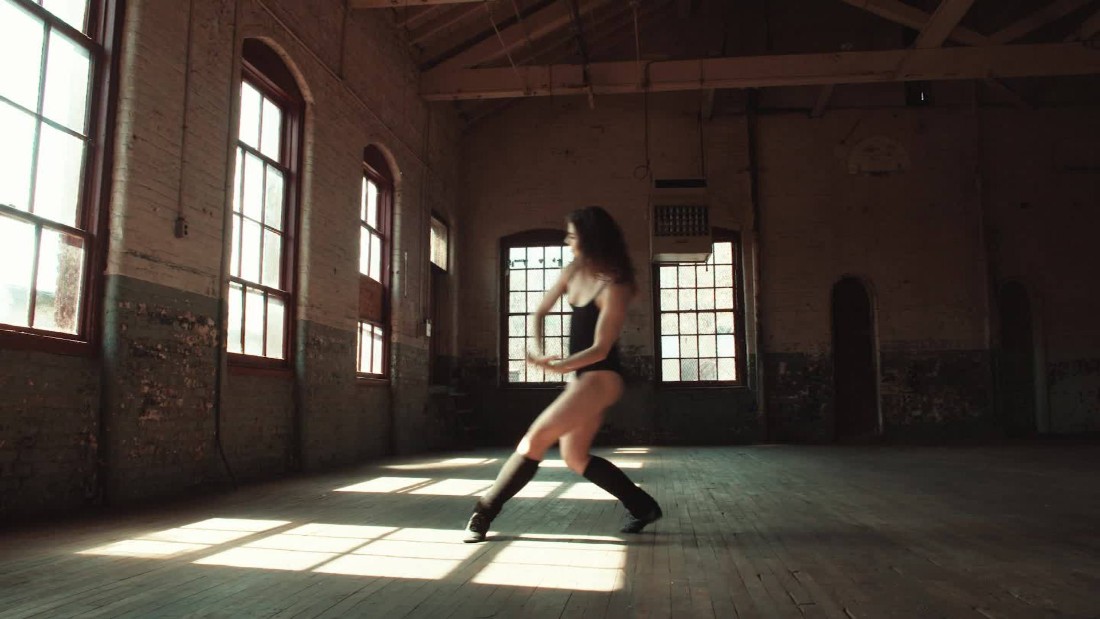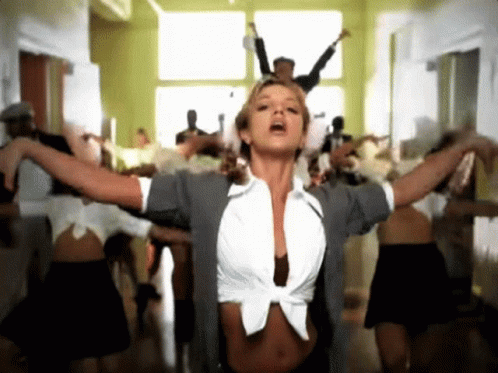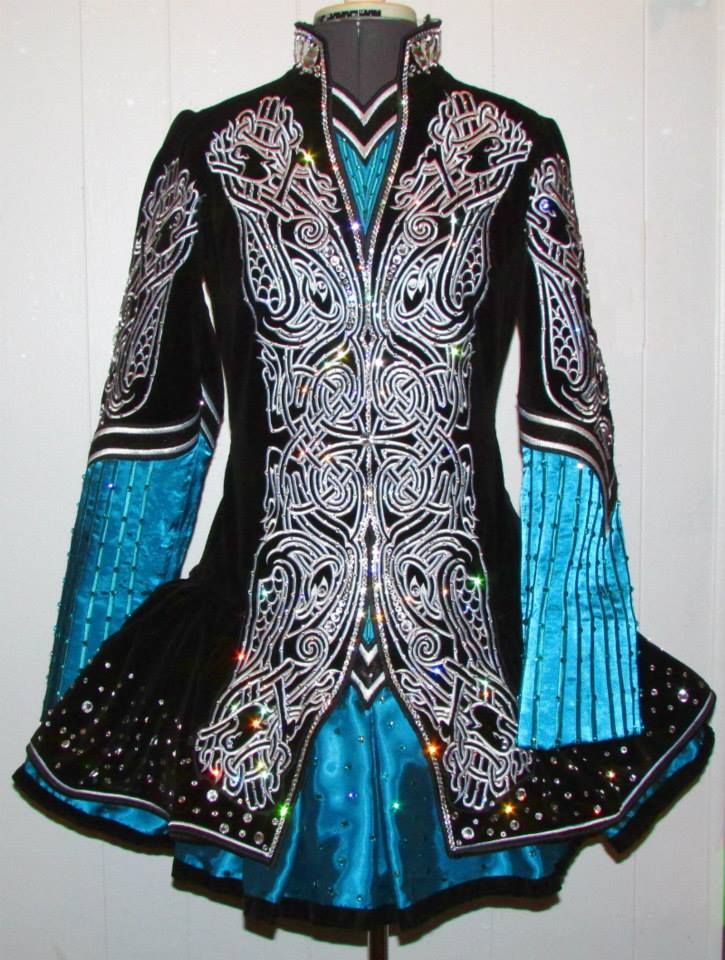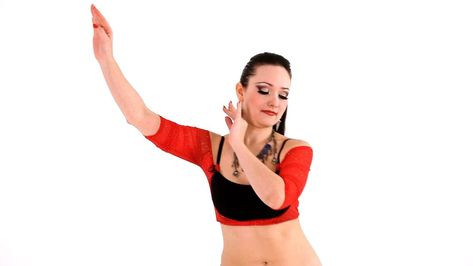How to do more turns in dance
Ten tips to help you become a natural turner! — London Ballet Classes
London Ballet Classes
Ballet Tips
London Ballet Classes
Ballet Tips
Turns require full-body co-ordination and the perfect amount of impetus and speed. They take years to master and whilst some of us take to turning naturally, many of us do not. Despite this, with consistent effort and focus, turning IS something we can all get better at. This post highlights 10 quick tips that can improve your turns. Which ones could you be better at?!
1. Spot – be sure to look with intention and fixate your gaze on where you want to go. Spotting becomes more important once we start going for doubles and triples and especially for fouettés. So even if you generally spot well, if you are aiming for multiple turns, go back to the basics and practice spotting, ensuring your head doesn’t tilt to one side on your way round.
2. Engaged Arms – if you fail to engage your arms they are a dead weight which can pull you off balance. Hold your arms in a clear position and get into that position quickly, the longer you leave the arms lingering, the more likely you are to lose your balance. Generally, it is good advice to keep the arms relatively close to the body and rib cage height or above. If the arms are too high you will end up arching back and if the arms are too low, your shoulders will slump forward. Practice transitioning through the arm movements while stationery to find the right height for you.
3. Use the third eye – remember lifting the chin and looking out of your ‘third eye; helps to improve your posture and alignment. It lengthens the spine and keeps you upright. When turning think more of going up and less about going around – this keeps you over your centre of gravity and makes you less likely to fall out of your turn.
4. Less impetus – Because many of us are truly terrified of turns, we panic and we tend to use more power than we need. We throw ourselves into turns rather than creating a feeling of being lifted and centred. Often with turns, less is more. Mentally strive for a controlled turn, which ends on a demi pointe, and finishes up rather than down. This means the turn should gradually slow to a halt, rather than collapse into an end position. With this focus on controlled turning, we reduce the intensity and often turn better. Think of it this way - greater force in the wrong direction requires more adjustment to find our balance. So, in the early stages, keep it steady
We throw ourselves into turns rather than creating a feeling of being lifted and centred. Often with turns, less is more. Mentally strive for a controlled turn, which ends on a demi pointe, and finishes up rather than down. This means the turn should gradually slow to a halt, rather than collapse into an end position. With this focus on controlled turning, we reduce the intensity and often turn better. Think of it this way - greater force in the wrong direction requires more adjustment to find our balance. So, in the early stages, keep it steady
5. Two turned out legs - When it comes to multiple turns, we need to create a counter balance, meaning both our legs should remain turned out for the duration of the turn. If your working leg turns in (on an en dehor pirouette) you will end up turning into the leg and getting stuck. To complete a full turn, think of the working leg as fully turned out and leading the way. Then think of the heel of your supporting leg as turned out and forward.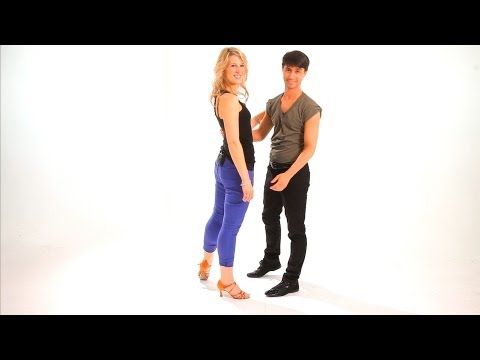 You can learn a lot from how you fall out of turns, if you fall back, your releve is likely not strong enough and your supporting foot is collapsing mid turn. Falling forwards is often an indication of too much impetus or disengaged arms. Falling to the sides can indicate weak or imbalanced obliques. Find out which way you fall and then self-correct.
You can learn a lot from how you fall out of turns, if you fall back, your releve is likely not strong enough and your supporting foot is collapsing mid turn. Falling forwards is often an indication of too much impetus or disengaged arms. Falling to the sides can indicate weak or imbalanced obliques. Find out which way you fall and then self-correct.
6. Shoulders broad and back – Slumped shoulders can throw you off balance because it not only interferes with the alignment of your head (and therefore spotting) but also with your ability to correctly hold your arms (which involves engaging your back muscles). Thinking of two square shoulders, broad and pulled back, helps to keep us balanced. Most of us have one arm which is stronger than the other and therefore we tend to use unequal force when turning, which ends up pulling us off to one side. Squaring the shoulders and engaging the back helps to counteract this.
7. A strong releve – Strengthening our feet is a key part of being able to turn.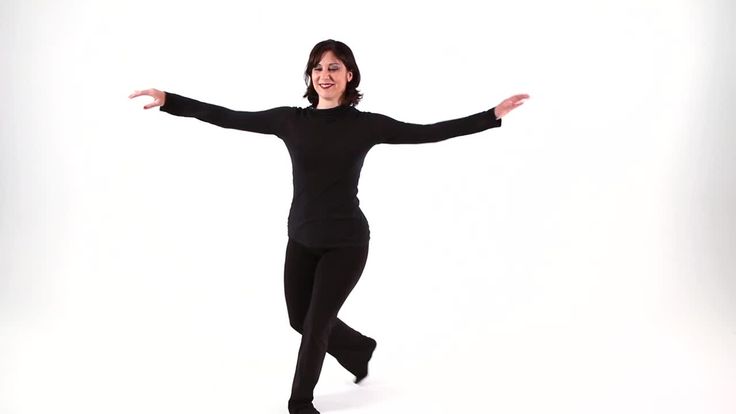 We must be able to sustain the releve for long enough to get around. If you find the supporting leg is collapsing mid turn, then it is time to go back to basics. Start with simple rises and releves at the barre and work towards trying to balance in the pirouette position (for a minimum of 4 counts). Try this both at the barre and in the centre. We must be able to hold a position before we can turn in it. Throughout your turn there should also be good contact between your foot and calf and this should be sustained at the same height throughout a turn. Therefore both of your feet are integral to turning, the stronger they are, the easier you will find it!
We must be able to sustain the releve for long enough to get around. If you find the supporting leg is collapsing mid turn, then it is time to go back to basics. Start with simple rises and releves at the barre and work towards trying to balance in the pirouette position (for a minimum of 4 counts). Try this both at the barre and in the centre. We must be able to hold a position before we can turn in it. Throughout your turn there should also be good contact between your foot and calf and this should be sustained at the same height throughout a turn. Therefore both of your feet are integral to turning, the stronger they are, the easier you will find it!
8. A secure starting position– make your starting position clear, whether it is third, fifth or fourth, ensure your weight is in the middle, and start with a good deep plie. Plies can help us to get our weight into the right place and they also provide the impetus needed to turn. The starting position is very important, because if your weight is in the wrong place you will need to self-correct while turning which is very hard! A good foundation is a good start. Practicing releves from a fourth or fifth position is a good way to prepare for pirouettes. If you are still struggling, practice quarter turns.
Practicing releves from a fourth or fifth position is a good way to prepare for pirouettes. If you are still struggling, practice quarter turns.
9. No micro adjustments – many people slightly pivot the foot before going into a pirouette, this is either because they are exaggerating their turnout and are therefore not balanced in their starting position or because they haven’t learnt to use the right muscles for turning. From a plie, go straight up into turning without adjusting the feet. Micro adjustments create a feeling of being disjointed and unbalanced, because we are creating more steps than there need to be. This in turn reduces our ability to turn because we exert some of our power in the micro adjustments rather than in the turn. Think of going up into a turning position in one swift motion.
10. Smile - finally and perhaps MOST importantly, experiment with smiling when you turn. It impacts ALL of the above steps. When I tell people to smile in their turns, the tension flows out of their faces and bodies, in turn enabling them to lift their chins, pull back their shoulders and use less force.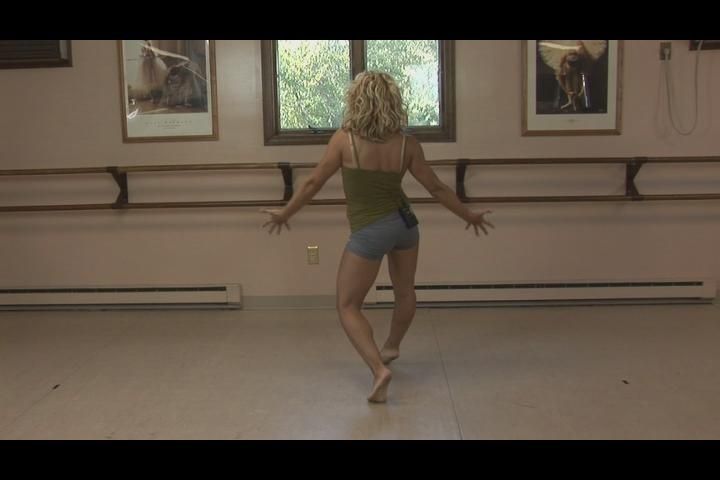 Mentally relax into turns and create a sense of fluidity – this will totally transform your experience. In the worst case scenario we fall out of a turn entirely – and then we can try again tomorrow!
Mentally relax into turns and create a sense of fluidity – this will totally transform your experience. In the worst case scenario we fall out of a turn entirely – and then we can try again tomorrow!
Let us know if these tips have helped you or if you have any other suggestions in the comments 😊
Tagged: balletaddiction, balletrepertoire, Ballet in London, Ballet, pirouette, ballet fitness, beginner ballet, pointe shoes, ballerina
What Makes These 6 Turns So Hard—Plus Tips on How to Master Them
Showstopping turns are every dancer’s dream, but they’re some of ballet’s biggest frustrations. We asked the experts for their insights on what makes these turns so challenging—and their best tips for mastering them.
Pirouettes From Fifth Position
Why They’re Hard:
It’s tricky to generate momentum from a closed fifth, “so dancers try to manufacture force by sticking their bottoms out and leaning forward,” says Jenifer Ringer, dean of the Trudl Zipper Dance Institute at the Colburn School in Los Angeles.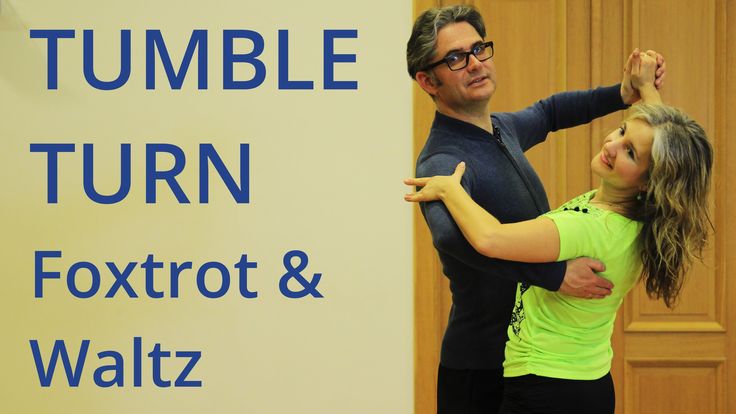 “Then when they relevé, they throw themselves backwards.”
“Then when they relevé, they throw themselves backwards.”
Master Them:
As counterintuitive as it may feel, moving straight up and down from a strong center will produce ample force. To maximize energy transfer into the rotation, maintain your turnout from start to finish. “Keep the working knee turned out so that it’s already in position as you go from plié to passé,” Ringer says.
Grand Fouettés en Tournant (Italian Fouettés)
Why They’re Hard:
“The croisé angle has to be sharper than you think,” says Ikolo Griffin, a Pacific Northwest Ballet School faculty member and founder of Just Turns workshops. “A lot of dancers start almost en face, and then when they try to fouetté, the leg goes to the side, barely going upstage.” Brushing the leg in a turned-out position as you move through first position is also difficult.
Master Them:
Griffin recommends starting in a steeply angled écarté.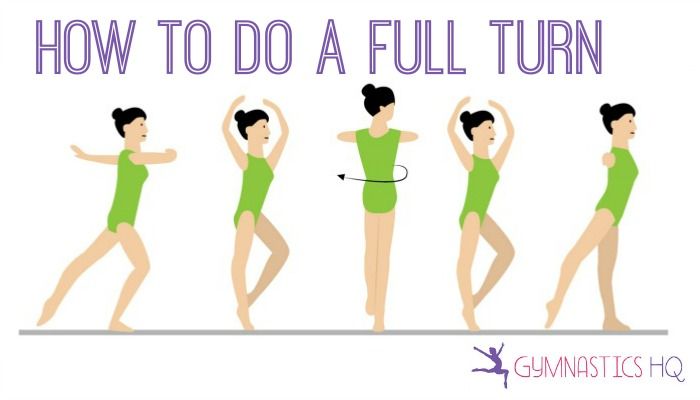 Then, using the line of your développé as a plumb line, maintain turnout as you brush through first and extend the working leg upstage to set up the fouetté into attitude. (You should feel like you’re brushing the leg almost entirely upstage.) Moving the arms through first rather than low fifth pro-motes a more upright posture, making it easier to get into relevé or onto pointe in the fouetté.
Then, using the line of your développé as a plumb line, maintain turnout as you brush through first and extend the working leg upstage to set up the fouetté into attitude. (You should feel like you’re brushing the leg almost entirely upstage.) Moving the arms through first rather than low fifth pro-motes a more upright posture, making it easier to get into relevé or onto pointe in the fouetté.
Pirouettes à la Seconde
Why They’re Hard:
Simultaneously balancing and relevéing on the supporting leg, and steadying the working leg
Master Them:
San Francisco Ballet principal Sasha De Sola, famed for her rock-solid turns, visualizes an ankle weight on her extended leg. “It helps me keep energy through the leg and let centrifugal force keep it at a steady level.” Griffin tells dancers to “move straight up and down as you relevé on the supporting leg—if you lean for-ward on the plié and back on the relevé, it throws you off. ”
”
Chaîné Turns
Why They’re Hard:
Dancers frequently travel too far with each rotation, and end up opening the legs out to second position.
Master Them:
Griffin advises keeping the feet in a tight first position, with your heels together, and holding your chin level as you spot. “Then you can do a lot of chaînés quickly, and it looks really impressive,” he says.
Back Attitude Turns
Why They’re Hard:
Rotating with your weight behind you requires awkward counterbalance.
Master Them:
Ringer reminds dancers to get over their front leg in the fourth-position preparation for en dedans turns. “If you’re over the back leg in fourth, that’s two motions you have to do”—shifting your weight forward and lifting up into relevé—reducing the amount of force you’re putting into the rotation, Ringer explains. With the weight squarely over the front leg, “you can just relevé straight up and lock your back and attitude leg against each other to hold the position and not let it be disrupted as you revolve. ” For en dehors turns, De Sola creates the necessary counterbalance by keeping her upper body lifted and placing her arms in high fifth, forward enough that “if you were to lookup, you could see your palms.”
” For en dehors turns, De Sola creates the necessary counterbalance by keeping her upper body lifted and placing her arms in high fifth, forward enough that “if you were to lookup, you could see your palms.”
Turns en Manège
Why They’re Hard:
It’s easy to lose your spatial orientation as you move around the circle.
Master Them:
De Sola maps out her spot and exactly where she wants to be in each part of the circle, and rehearses it over and over. “I’ll plan to do three turns across the front, then the fourth on the diagonal, and so on—everything is calculated,” she says. “Think of each sequence of turns as linear, and allow each turn to finish before you change your spot for the next one.”
 Waltz has long been a very popular dance. Often, he even acted as a model for creating other ballroom dances and various types of waltz.
Waltz has long been a very popular dance. Often, he even acted as a model for creating other ballroom dances and various types of waltz. Germany and Austria are considered to be the birthplace of the waltz. Despite this, the roots of the waltz go back to the Czech dance "mathenik", which was performed at the holidays, as well as to the French "volt" ("lavolta") and the Austrian "lendler". By the way, fast waltz forms are called Viennese waltz.
In order to learn how to waltz, by and large, you need to know only two basic movements: the right turn and the so-called "track". Since the "path" is not particularly difficult to learn, we will begin our explanations with a turn. A full 360-degree turn consists of 2 parts and is performed for 2 measures, given that the musical time signature of a waltz (one measure) is 3/4. The rhythm of the waltz is a continuous count: one-two-three-one-two-three... Before learning to dance in pairs, it is best to practice the turn alone.
Learning to turn
First half. Stand facing the movement so that the legs are in the third position (the heel of the right foot is attached to the middle of the left foot, and the socks are turned to the sides - the so-called eversion position). By the way, in a waltz, the legs should always be in such an eversion position. Now we proceed directly to the turn.
Take a step forward with your right foot, starting to turn to the right (this is "one"), after that - step with your left, increasing the turn and standing with your back along the line of dance (this is "two"), on the count of "three" the right leg is pulled up to the left and rises to the original third position. This is the first half of a full turn - as a result, you should turn exactly 180 degrees. When you work out these mechanical movements, pay attention to the fact that your steps are smooth, slow - dancing.
To do this, at the second step, rise on your toes, and by the end of the third step, lower yourself onto your foot, as if crouching a little. The effect of sliding on the parquet should be created.
The effect of sliding on the parquet should be created.
Second half. At the end of the first half of the turn, you should be standing with your back on the line of dance and your feet in third position, as we said earlier. Take a step to the side with your left foot (this is “one”), while keeping the entire weight of the body on the left foot, now bring the right foot with the inside of the toe behind the heel of the left foot (this is “two”), now turn on the half-toes of both legs to the right so so that you find yourself in the very initial position - facing along the line of dance (this is "three"). This rotation must also be exactly 180 degrees. Practice the steps.
To perform a full dance turn, simply connect the first and second halves of the turn. Remember that all movements are light, smooth, on the toes. You must slide.
Turning alone is much easier than in pairs. And this is true: you must feel your partner, follow not only your own, but also his actions.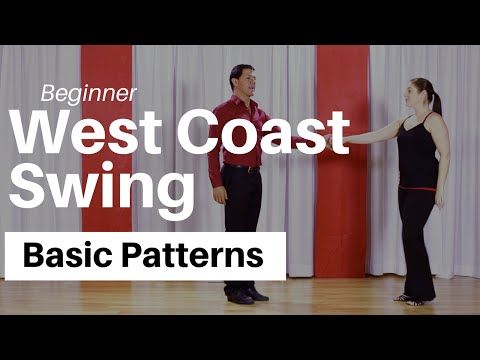 Moreover, the uncertainty and excitement from one person is very quickly transferred to another, so it's so easy to get lost, to forget the necessary movements.
Moreover, the uncertainty and excitement from one person is very quickly transferred to another, so it's so easy to get lost, to forget the necessary movements.
For a paired full turn You must stand together: the girl is in the line of dance and the man is behind. At the same time, the girl begins to move forward from the right foot, while the man starts moving from the left and to the side. That is, it happens that at first the girl dances the first half of the turn, and the man dances the second, and then the opposite is true. That is, at the same time, each partner performs different halves of a full turn. You should not immediately move to a fast pace - it is important to understand the principle of movements, to work out not only the technique, but also the dance smoothness, lightness and beauty. When dancing a waltz, you must always move forward along the line of dance, respectively, in each measure (one-two-three) you need to make a turn of 180 degrees. The fact that we divided the full turn (360 degrees) into two parts is purely arbitrary, for the ease of learning movements, therefore, in the dance itself, this division should by no means be visible - the turn is made as a whole.
The fact that we divided the full turn (360 degrees) into two parts is purely arbitrary, for the ease of learning movements, therefore, in the dance itself, this division should by no means be visible - the turn is made as a whole.
Waltz "track"
Waltz, as a rule, is not danced only in one direction - it is boring, and it makes the dance completely inexpressive, monotonous. That's what the dance floor is for.
Stand together facing the line of dance (next to each other) and march to the waltz music, taking one step per count. It's not that hard if you listen carefully to the rhythm of the music and follow it. Now try to walk in the same way, only on half-toes (the knees should be tucked up, but not tense). Don't take too big steps, but don't get too small either. Practice for each count of "three" to lower from half toes to the entire foot. The "path" should also create the effect of easy sliding and not get out of the dance.
One "track" occupies one measure: one-two-three. All steps must be equal in size. A man, as a rule, makes a track, stepping back a little and always starts with his left foot, and a girl, on the contrary, moves forward and starts with her right foot.
At the beginning, it is best to compose the dance as follows: two full turns for four measures and four measures of the "track". When the movements are honed and rehearsed, it will be possible to switch to the "track" less often and circle more often in the dance. Some combine, for example, 12 bars of rotation and four bars of "track".
By the way, about turning to the left: everything is done in the same way as when turning to the right, only, accordingly, you need to start on the other foot and in the other direction. Do not rush to immediately go to the left turn, so as not to get even more confused - first, rehearse the right turns well.
Dance lesson
Learn to waltz! Believe me, this is a very beautiful and spectacular dance.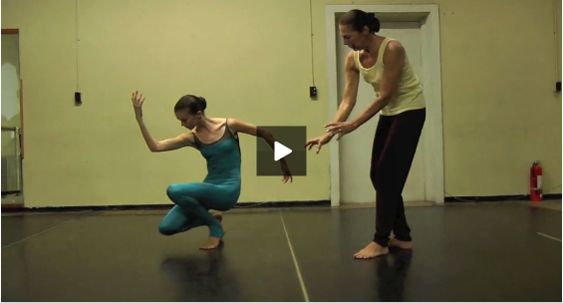 Many, by the way, are afraid that during rotations they will feel dizzy - nothing like that. This is just a matter of habit, but there is also a little secret: do not look around, but focus on your partner or look at the line of dance. Good luck to you and good luck!
Many, by the way, are afraid that during rotations they will feel dizzy - nothing like that. This is just a matter of habit, but there is also a little secret: do not look around, but focus on your partner or look at the line of dance. Good luck to you and good luck!
Sports
Despite the instability: the Vyatka Elk competition will be held in Kirov
The essence of the competition is unchanged: survival, search and rescue of people in the natural environment.
Roads
Attempt #2: night public transport routes will return to Kirov roads
The Transportation Department has been tasked with amending the schedule based on information received from the defense industry.
Photo stories | Sports
"Run, dear, run": more than 750 people ran the distances of the "refreshing" marathon in Kirov
The final sporting event from the Vyatka Hills series took place in Kirov.
Sports
Not even a year has passed: the athletics arena was closed for major repairs
What is the reason for such a decision? Details - in the material ikirov.ru
Society form and other changes.
Society
Installation of lamps on the facades of the Spassky Cathedral continues in Kirov
Modern lighting is designed to emphasize the beauty of the restored historical building.
Founder: Information City LLC. Editor-in-Chief: Vetoshkin Andrey Alekseevich.
Editorial e-mail: [email protected], Editorial phone: (8332)52-90-31
Mass media registration certificate EL No.
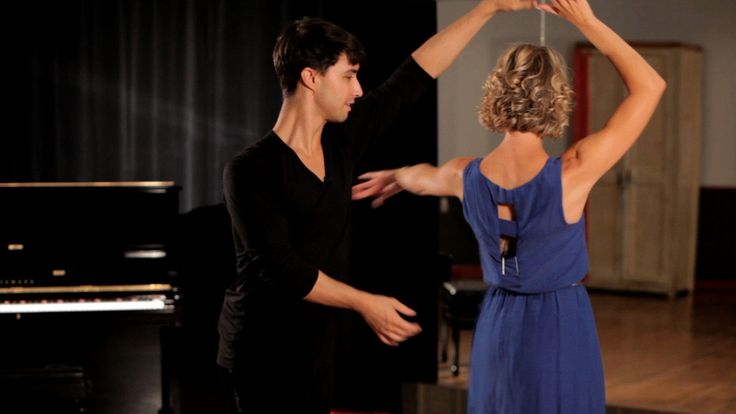 FS 77 - 34616 dated December 02, 2008
FS 77 - 34616 dated December 02, 2008 issued by the Federal Service for Supervision of Communications and Mass Media communications.
Legally significant messages should be sent to the address: Kirov, st. Uritskogo d. 24 office 2.
Dive into the depths of the dance. Muscles: zoukability — LiveJournal
Author: Murasheva NadezhdaFriends, I am starting a block of articles about the "underwater" part of the dance. We will explore the topic in more depth, how to learn to move beautifully and plastically and hear your partner. If you don't go to some third-party classes and master classes outside of social dances, then these topics are almost not covered in the lessons. In good classes, the correct work of the muscles is sorted out, but this still does not add up to a comprehensive picture.
In one of my previous articles, I likened dance to a big iceberg, the main part of which is hidden under water and opens up to us as we deepen into the knowledge of dance, movement, and our body.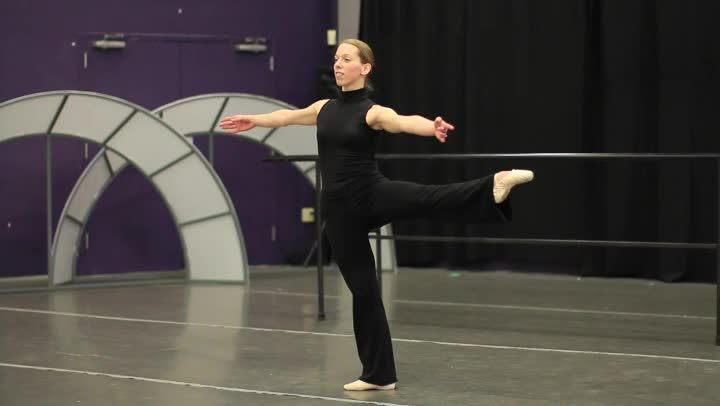 When a non-dancing person looks at the dance from the side, he sees the tip of the iceberg - its external manifestation. A beginner dancer continues to see only this top for a long time (and sometimes it ends with this), because the dance for him still remains a set of movements - an external form. Even if these are movements from an advanced lesson. Beautiful, cool, complex, spectacular. "I want that too." Growing dancers begin to master all these complex movements, go into narcissism and show off through figures. When I look at dancers at parties it's 90% of the time I see exactly this - chasing the outer form. Sometimes tops dance like that. Dancers think in figures. But this is only the surface ABOVE the water! All the most interesting is deeper.
When a non-dancing person looks at the dance from the side, he sees the tip of the iceberg - its external manifestation. A beginner dancer continues to see only this top for a long time (and sometimes it ends with this), because the dance for him still remains a set of movements - an external form. Even if these are movements from an advanced lesson. Beautiful, cool, complex, spectacular. "I want that too." Growing dancers begin to master all these complex movements, go into narcissism and show off through figures. When I look at dancers at parties it's 90% of the time I see exactly this - chasing the outer form. Sometimes tops dance like that. Dancers think in figures. But this is only the surface ABOVE the water! All the most interesting is deeper.
And what is there, in the depths, "under water"?
- The world of connection with a partner. What does it depend on? From connecting with yourself. How to feel a partner if you don't feel your own body?.
 .
. - Control of your body: muscle tone, ability to relax, control of your body structure, in general feeling and awareness of your body.
- Feeling and awareness of oneself as a whole. After all, our body and consciousness are interconnected, and the state of one is reflected in the state of the other. By acting on one, we have an effect on the other, and vice versa. Both in a positive and negative way. What a person has inside is how he moves.
 ..
..
So, today we will begin to consider the level closest to the surface of the iceberg - muscle control . It is also the easiest to understand and use. When you better understand what muscles are performing movements, what to follow, your movements will become clearer, cleaner, more conscious. The movements that you learned by visually copying after the teacher will become clear from the inside: what works, why it works and what you need to make it even better.
Why is this level closest to the surface? Because muscle ownership determines how your movements will look (but not only from this), because your balance, rotations, cambrai and much more depend on muscle tone.
And it's the easiest one because it's much easier to pump up muscles than to learn isolation, relaxation and finer sensations. Muscle training is just a physical activity, albeit hard sometimes. Any dancer can pump up the press, which, however, will not teach him plasticity and connection with a partner.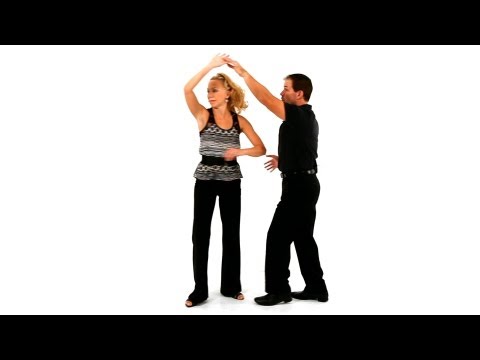
Muscles not only help us perform movements correctly and beautifully, but also protect us from injuries, which is why it is so important to develop our physical form.
One of my favorite themes is that if you just go to the gym and pump something there, it doesn't help you dance properly at all. In addition to having a pumped up muscle, you must learn how to use it in dance movements, keep it in good shape on the machine, without flying out of your attention from the dance and connection, otherwise your work in the gym is useless. This is a characteristic feature of the dance. In the gym, we learn to tense our muscles strongly and relax 10-50 times. We leave the room and forget about them.
In dancing, you need to constantly keep in good shape and control many different muscles at once. This is a lot less tension than in the gym, but getting used to this state of constant soft tone can be very difficult. The dancer must have good control over his entire body in dynamics and statics, must be able to control tension and relaxation (stability and plasticity), feel his individual muscles (isolation), must have acquired the skill of holding passive attention at several points at once (back, abs, feet as minimum), which should not distract from the dance itself, connection, music and the surrounding space.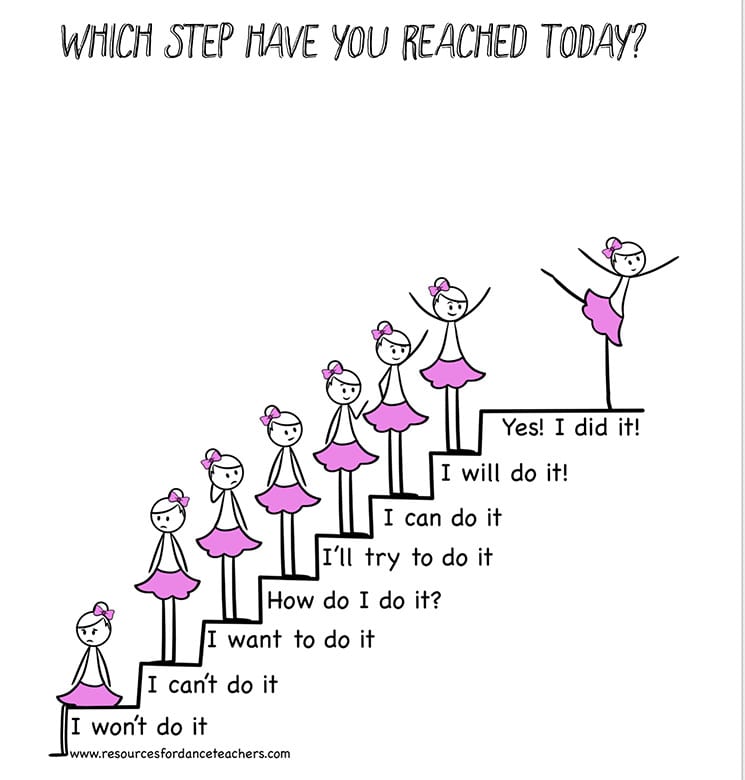
Note: The article does not take into account physical limitations due to injuries, hernia, protrusions, etc.
PRESS
Upper, lower and oblique abdominal muscles.
From an anatomical point of view, the abdominal muscles give stability to our spine (in fact, this is somewhere around 50% of success). - Balance, rotation, stability, yes, yes
Using the press greatly reduces the load on the back when bending and tilting, helps to build the axis on rotations. And therefore, a non-working press creates an overload of the lower back and other parts of the spine, which is fraught with muscle and nerve clamps, displacement of the spinal discs, hernia and chronic back pain, especially among zuckers. And with a broken press, you will be chatting on all rotations.
The oblique muscles of the abdomen give us plasticity, beautiful tilts to the sides, light soft work of the body in a circle and, of course, additional stability in difficult positions of the body.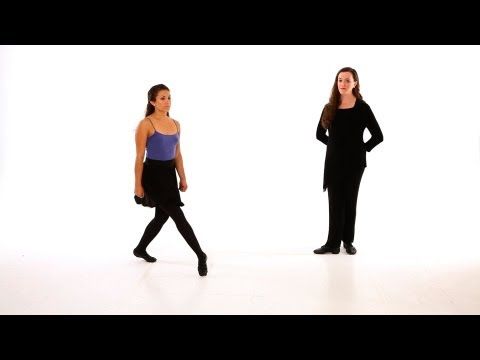
If we talk about the zouk, then we actively use the press in all movements with body inclinations (cambrai, headworks, bones, etc.), on rotations, on counterbalances. Wherever we need stability, a strong body, a straight back (in particular, the lower back). The press is collected on all supports and "falls" on a plank-type partner so that the body does not fall through. Sometimes, for even greater stability and inclusion of the press, you need to twist the pelvis forward even more (a la Michael Jackson) to fix the body even more strongly. I use it on cambra preps, bone necks, long spins. But you need to understand that the press does not tense up in the dance with an impenetrable shield as before the opponent's blow (then the dance would be too hard and exhausting). The work of the press is rather similar to what happens in Pilates: the navel is pulled up to the spine and remains there in a passive tone always. If necessary, the lower or upper press is additionally strengthened.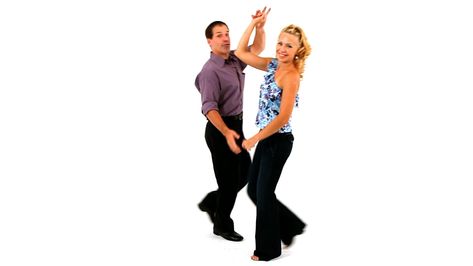
Interestingly, in zouk, a number of common movements require isolated possession of the upper and lower press. So, for example, when working with the chest (headworks, etc.), we weaken the upper press, but firmly hold the lower one - for stability, balance, so as not to fall apart.
Alas, even with trained abs, many dancers don't use them. They make movements with a relaxed stomach, which is why they fall apart, lose structure in the body. Using the abdominal muscles should be a habit. Spent, automatic. However, like all other muscles, which will be discussed further. In order not to think every time about all the muscles that need to be included.
You can often see dancers in a position of constant arching in the lower back, even just standing still. This is an indicator that they do not use the press at all;) In the position of the lumbar deflection, it is possible to draw in the stomach a little, but it is impossible to fully use the press. Which is logical, because when in one place there is contraction, tension (in the lower back), then on the other side there is stretching and relaxation.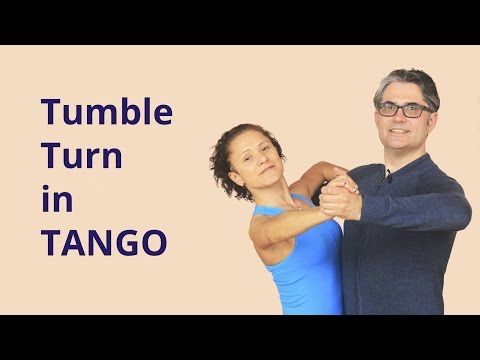
Another typical mistake is the constant deflection under the shoulder blades, which is what they say "remove the ribs" in ballet lessons. This is a deflection above the waist, which means that in this case the upper press does not turn on and, as a rule, the back muscles in the thoracic region and sometimes between the shoulder blades are strongly clamped. It is very difficult to get rid of this habit. Usually combined with a lumbar deflection. Ribs stick out in front, buttocks in the back, and somewhere in the middle in a bend, a poor, clamped spine.
Basicly everyone knows how to pump the upper and lower press. There are a lot of options. I will only add that, firstly, you should not put your hands on your neck and try to lift yourself with a jerk of your arms or head - this is technically incorrect and dangerous, hypertension is created in the neck, and in fact you lift yourself with your neck, not with a press. It is better to keep your hands on your chest or on your stomach.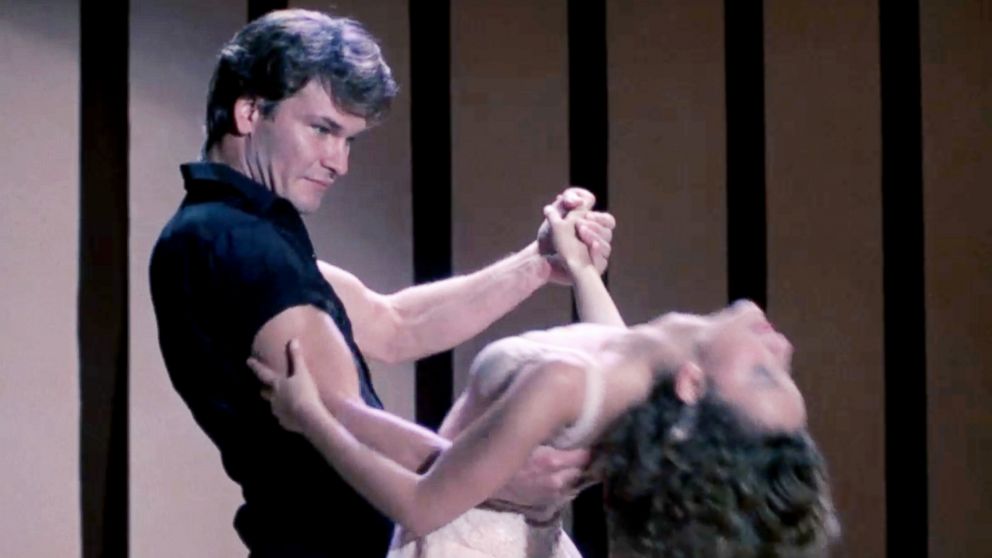 If the press is weak, then it will be more difficult, yes. But now you do not deceive yourself. And secondly, if you swing the lower press by raising your legs, then there should be no deflection in the lower back. If the lower back sags, it means that you do not have enough strength and abs and back, and instead of the lower press, you again overload your back. Press your back completely to the floor and bend your knees - this will be better. And yet, given the peculiarities of the dance work of the muscles, it is better to do all exercises slowly. No need to chase the number of movements. Let them be only 10, but each stretched into 10 accounts, for example.
If the press is weak, then it will be more difficult, yes. But now you do not deceive yourself. And secondly, if you swing the lower press by raising your legs, then there should be no deflection in the lower back. If the lower back sags, it means that you do not have enough strength and abs and back, and instead of the lower press, you again overload your back. Press your back completely to the floor and bend your knees - this will be better. And yet, given the peculiarities of the dance work of the muscles, it is better to do all exercises slowly. No need to chase the number of movements. Let them be only 10, but each stretched into 10 accounts, for example.
The oblique muscles of the abdomen are trained with various twists and side bends. Twisting should be smooth, on the muscles, not jerky. Turns are carried out from the waist, the hips should not turn anywhere - this is important and a common mistake. So that the hips do not exactly spin, you can do twists while sitting on the priest (and at the same time keep a straight back).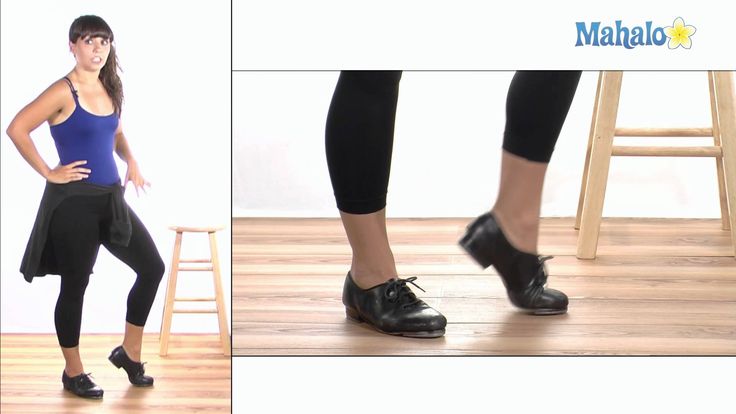 Still tilts to the sides - both fast (strength training) and slow (stretching, endurance). On tilts to the side, both of your shoulders should look into the mirror, and not at the floor - otherwise you train other muscles, and the obliques remain undeveloped. The chin on the side slopes also looks into the mirror, and not at the floor.
Still tilts to the sides - both fast (strength training) and slow (stretching, endurance). On tilts to the side, both of your shoulders should look into the mirror, and not at the floor - otherwise you train other muscles, and the obliques remain undeveloped. The chin on the side slopes also looks into the mirror, and not at the floor.
I would like to draw attention to the following points in the photo:
See how straight she holds her neck. The head does not move forward and does not throw back. That's right, that's the way it should be.
This position can be made easier by bending your knees and rounding your back a little (the press still works, it will be easier). But the option in the photo with a straight back is more complicated and better because the back muscles will also work this way. And the legs extended at the knees are heavier, more difficult to hold them.
BUTTOCKS
There are quite a lot of gluteal muscles, and they will work differently depending on the movements.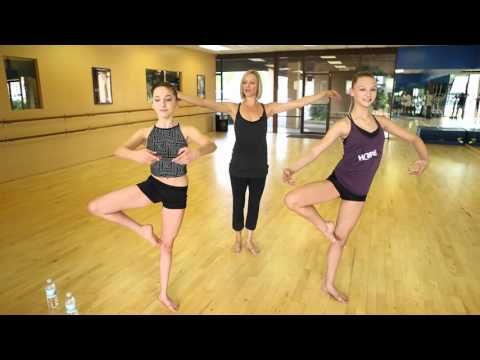 Therefore, the expression "swing ass" is somewhat abstract. But if you dance only social dances, then you should be primarily interested in the gluteus maximus muscle and the ability, if necessary, to keep (!) It in suspense during dance movements.
Therefore, the expression "swing ass" is somewhat abstract. But if you dance only social dances, then you should be primarily interested in the gluteus maximus muscle and the ability, if necessary, to keep (!) It in suspense during dance movements.
The effect of using the gluteal muscle is about the same as that of the press - stabilization of the core. Here it is only necessary to understand that the press directly stabilizes our top (spine), and the buttocks stabilize the pelvis, that is, the bottom (legs, hips, lower back). A retracted buttock limits the mobility and rotation of the hip joint, and the position of the hip joint affects the position of the lower back as well - everything is interconnected. By pulling your butt in, you limit the stride length available to you, this helps to fight drifts in the dance, especially on turns and spins.
What do you need to remember? The fact that if you pumped up a big beautiful ass in the gym, and in the dance she is always relaxed, then there is zero sense in her! Amen.
To dance, you just need to be able to pull it in strongly, "squeeze a coin" between the buttocks. Well, to maintain this position for a while - it's easier here than with the press.
Regular squats are not very suitable here, they just increase the volume of the buttocks and thighs. Much better are leg raises while lying on your stomach, and even better are real bodily tasks in dance: ballet exercises in which you always need to keep your butt. For example, ballet plies with toned buttocks, tandu and all other happiness. The bar is still very good, if done correctly, retract and twist the pelvis forward.
But this is the wrong plank! There should not be such a bend in the lower back, the pelvis needs to be scrolled forward more.
Correct bar . Compare body lines.
LONG BACK MUSCLES
In fact, this is a whole group of closely spaced muscles. It doesn't matter to us now.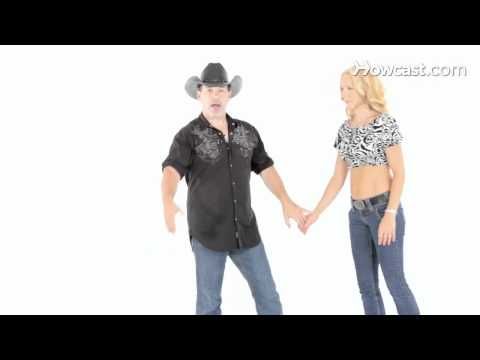 If you put your thumbs on your spine and step back a little, you will feel such powerful thick seals from the lower back and along the entire spine, passing into the muscles of the neck. It's them.
If you put your thumbs on your spine and step back a little, you will feel such powerful thick seals from the lower back and along the entire spine, passing into the muscles of the neck. It's them.
Muscles are potentially very strong and useful, and therefore sad if they are not working. You have no idea how much you are missing if you don't own them! And often they are non-working and at the same time they are still heavily clogged with incorrect operation of the case in principle. Then they have overstressed painful areas that you do not know how to control, you cannot relax them and strain them at will. Then it's even more difficult, but it's fixable.
The long back muscles pull the spine up and help keep it in a straight, straight position. Just as the abs keep the spine stable on one side, the long back muscles support it on the other side. When the teacher says "we stretch the top of the head up", then the activation of these particular muscles is meant. When you feel and control them, you feel a real physical upward pull.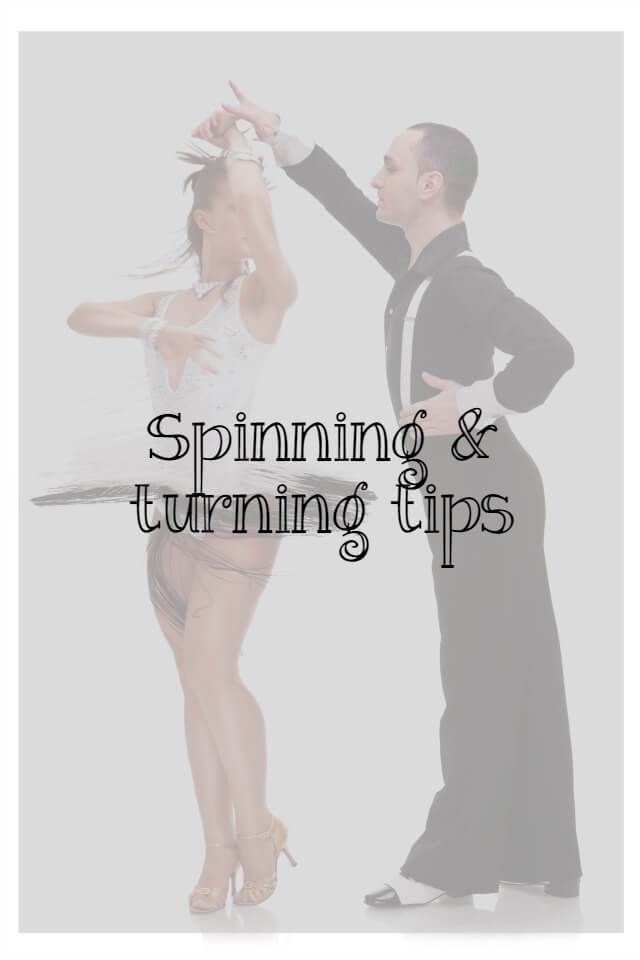 These same muscles keep the spine in good shape and when tilting the body, they also greatly affect your posture and body structure in the dance, the pattern of relaxation and tension, and this affects how absolutely all your movements look and feel.
These same muscles keep the spine in good shape and when tilting the body, they also greatly affect your posture and body structure in the dance, the pattern of relaxation and tension, and this affects how absolutely all your movements look and feel.
An ordinary untrained person does not feel these muscles and does not understand what it means to stretch upwards. "How to stretch, what?". Or maybe these muscles are even pumped up by boats, but it's still not clear how to reach up. This is fine. If you are working on yourself, then it is very important to learn how to master them. The technique of your rotations, centering, a smooth, stable exit from any rotations, without blockages, distortions, even with poor partner guidance, will depend on this, and in general your well-being and health will be better. When female partners fall heavily on their side in slopes and fall in turns - they do not work, there is nothing to build an axis with.
Learning to control the long back muscles is more difficult than mastering the abs or buttocks.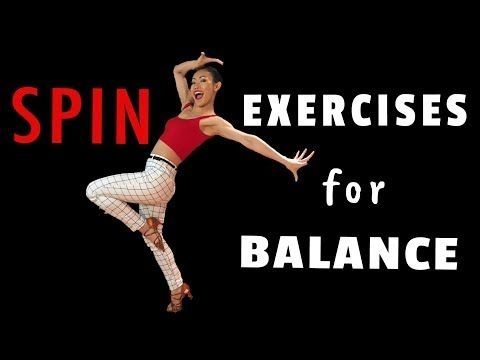 First you need to remove the interference of posture, which prevent these muscles from being included in the work. Namely, you need to tighten your stomach, remove the deflections in the lower back and under the shoulder blades, remove the ribs sticking out forward. If your ribs stick out, then you a priori cannot use your back muscles normally. They are chronically tight and shortened. Stand up to the wall and try to press against the wall with your whole back as much as possible, hold the position without the wall. And strive to press the lower back, even if it doesn’t work out completely.
First you need to remove the interference of posture, which prevent these muscles from being included in the work. Namely, you need to tighten your stomach, remove the deflections in the lower back and under the shoulder blades, remove the ribs sticking out forward. If your ribs stick out, then you a priori cannot use your back muscles normally. They are chronically tight and shortened. Stand up to the wall and try to press against the wall with your whole back as much as possible, hold the position without the wall. And strive to press the lower back, even if it doesn’t work out completely.
The strength of the long back muscles is well trained by boats and tilt-ups with a straight back, but this does not teach you to reach up. For training the stretch itself, I have not yet come across anything more effective than ballet exercises in the middle of the hall. When you balance on one foot without the support of the barre, your body finds this stretch on its own, it gives stability. That's exactly what happened to me, and pretty quickly.
That's exactly what happened to me, and pretty quickly.
NECK
I wrote an article about headwork rules. You need to know these rules!
Headworks are not done with the neck muscles. But the muscles of the neck must be in a passive tone so that the cervical vertebrae are safe, so that they are not subjected to sudden traumatic movements, are not clamped or overextended. The exercises are very simple: tilt the head up and down, turn left and right, tilt the ear to the shoulder. Exercises are best done slowly and with effort. It is also very useful to work with an isometric load: press your head through the resistance of your hands. All this at the same time is the prevention of cervical osteochondrosis, strengthens muscles and promotes the health of our cervical discs.
Typical mistakes of a zouk : throwing the head back, throwing the head back on a relaxed neck, headwork through the neck muscles, asymmetrical position of the head relative to the work of the body (the head falls forward or back and outweighs).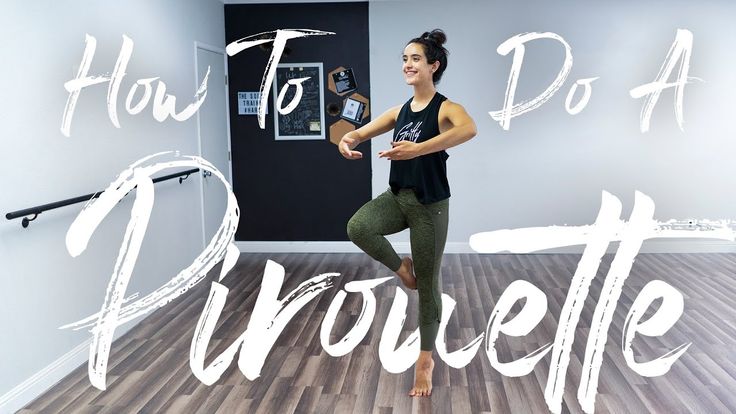
But besides this, there is a posture error that few people talk about, and it is inherent in many. This error is chin up. We know to reach up with the top of our head. That's just the muscles of the top of the head physically can not pull us up and have completely different functions. The crown is a purely visual landmark (just not everyone is aware). But we don’t even know where the top of our head is and how it should feel. And so we raise our chin and stretch our foreheads up. In this position, the front muscles of the neck stretch upward, and the back muscles, which should work, are compressed. This is exactly the opposite of what the teacher wants from you. In addition to the physiological harm to your neck, this also prevents you from dancing: the stable position of the head is disturbed, the head begins to outweigh and fills you back. This is especially problematic on spins.
It is better to correct the position of the head at the mirror and through the same exercises, carefully monitoring the position of the head. The simplest and most effective: put your hands on the back of your head. Feel for two bones at the base of the skull with your thumbs and grab them as well. Press your head on your hands and your hands on your head. Holding these bones and maintaining pressure, stretch your head with your hands a couple of centimeters up.
The simplest and most effective: put your hands on the back of your head. Feel for two bones at the base of the skull with your thumbs and grab them as well. Press your head on your hands and your hands on your head. Holding these bones and maintaining pressure, stretch your head with your hands a couple of centimeters up.
LOIN
Dancers! The lower back in the dance should be straight! (Well, almost straight, - for the most meticulous) No deflections just like that in every movement. Deflection is not styling! Chronic backbend is a lump of tension that you live with, and hit it even more in all amplitude movements. Then it can turn into a hernia of the lumbar and pinched nerve endings.
As I wrote above, you need to pump the lower press more, and activate the abdominal muscles to align the lower back and hip joint. In addition to this, it is very necessary to learn how to sit on the sitting bones with a flat back. This is generally a mandatory minimum for the normal posture of any non-dancing person.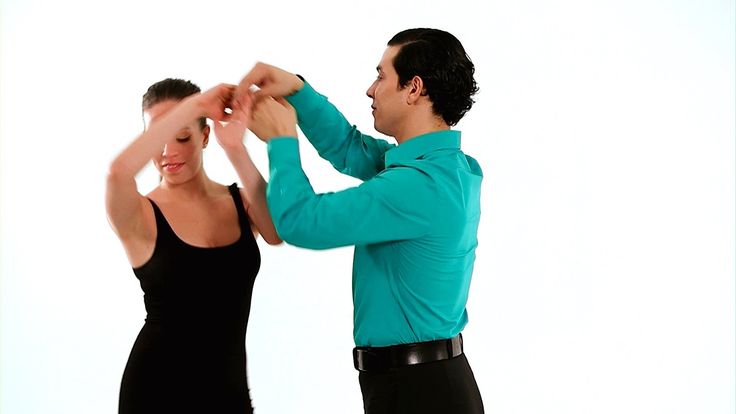 When you can just sit straight, then we go into the fold to the legs, be sure to stretch the lower back. It will be very gross. This is not a leg stretch, no need to dive head first. It is important to start folding towards the legs from the hip, trying to put the stomach and ribs on the legs. At the same time, you can stretch your arms forward, this helps to stretch yourself.
When you can just sit straight, then we go into the fold to the legs, be sure to stretch the lower back. It will be very gross. This is not a leg stretch, no need to dive head first. It is important to start folding towards the legs from the hip, trying to put the stomach and ribs on the legs. At the same time, you can stretch your arms forward, this helps to stretch yourself.
The muscles of the lower back are also trained in different inclinations with a straight back. Also, be sure to keep your lower back pressed to the floor in all pumping exercises when you are lying on your back. Especially when it comes to abdominal exercises. And standing against the wall, we press the lower back into the wall! Out of habit, it will seem that you are hunched over, but in fact, sleeping muscles just turn on, and your back becomes straighter. Try to maintain this position yourself by checking yourself in the mirror.
serratus anterior
Muscle that depresses the scapula. If your shoulders often rise, it means that she is not in good shape, and at the same time, the muscles of the neck and trapezium are probably clamped. If this muscle does not work, the female partners do not understand the lead well, and the partners do not know how to frame and twitch their arms a lot. If the serratus anterior muscle is not in good shape, then the shoulder and shoulder blade are not the connecting link between the body and arms. The body moves by itself, and the arms and shoulders move by themselves, without coordination with the body. Connection without anterior dentate is snotty and twitchy (because with hands).
If your shoulders often rise, it means that she is not in good shape, and at the same time, the muscles of the neck and trapezium are probably clamped. If this muscle does not work, the female partners do not understand the lead well, and the partners do not know how to frame and twitch their arms a lot. If the serratus anterior muscle is not in good shape, then the shoulder and shoulder blade are not the connecting link between the body and arms. The body moves by itself, and the arms and shoulders move by themselves, without coordination with the body. Connection without anterior dentate is snotty and twitchy (because with hands).
In the dance, you literally need to weld the shoulder blade to the ribs and leave it there forever. Difficult? Possibly)
You can come up with quite a few exercises to strengthen the anterior serratus. Mandatory condition: through "I can not" lower the shoulder blades. You can slowly raise and lower straight arms with a small weight, do rotations in the shoulder joint, you can stretch the elastic in different positions.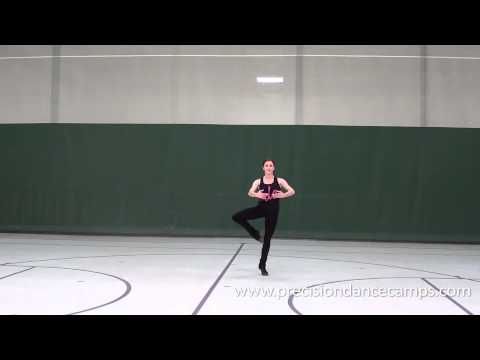 The slats also pump the front gear well, just do not forget to press the shoulder blades down. All sorts of positions are good with an emphasis on the floor with your hands (I want to relax my shoulder, and then it will climb into my ear).
The slats also pump the front gear well, just do not forget to press the shoulder blades down. All sorts of positions are good with an emphasis on the floor with your hands (I want to relax my shoulder, and then it will climb into my ear).
Rhomboid muscle
Muscle that brings the shoulder blades to the center. It affects the spread of the shoulders and the tone of the frame as well.
It is important that the muscle is in good shape, but not overstressed (!). Attempts to dance with the shoulder blades constantly gathered towards the center will kill all the plasticity in the thoracic region, and at the same time you will no longer feel the physical connection with the partner (where it is clamped, energy and subtle sensations do not pass there).
Actively activated by spreading the arms to the sides with the institution far behind the back, you can use weights, you can lie on your stomach. On your stomach, simply spread your straight arms to the sides and tear them off the floor as high as possible.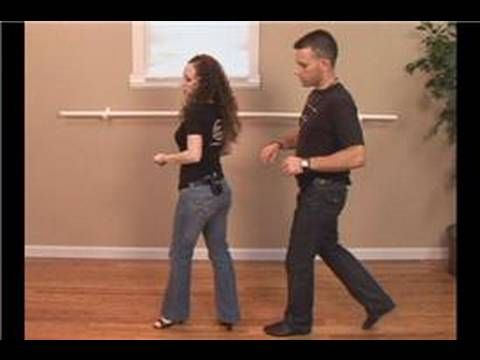 If you wish, you can find many more options on the Internet.
If you wish, you can find many more options on the Internet.
When training the rhomboid muscle, watch the ribs, do not bend in the chest. It can be difficult)
LEGS
The fact that any dancer needs strong, trained legs is obvious. And it would be strange to single out some individual muscles and say that they are the most necessary for social dances. All the muscles of the legs are somehow involved in performing various movements and maintaining balance. Everything is important here. Legs need to be trained in a complex and varied way. The health of your joints, especially your knees, depends on the condition of your legs (strength and stretching of the muscles). About them a little further.
It usually happens that dancers perform some kind of monotonous set of exercises that does not fully load their legs. This is not good, as you will be left with undeveloped areas, the weakness of which will affect the quality of your movements and may even negatively affect the condition of your joints. For example, the most common leg exercises (lunges, squats, swings, half-toes, etc. - the basic set) usually do not pump the inner thigh muscles in any way. Ballet exercises, on the contrary, perfectly pump the back muscle group and adductor muscles of the thigh, but load the muscles of the front and outer sides a little. Pilates works very complex with the muscles of the legs (and the whole body).
For example, the most common leg exercises (lunges, squats, swings, half-toes, etc. - the basic set) usually do not pump the inner thigh muscles in any way. Ballet exercises, on the contrary, perfectly pump the back muscle group and adductor muscles of the thigh, but load the muscles of the front and outer sides a little. Pilates works very complex with the muscles of the legs (and the whole body).
Conclusion: you need to train your legs in a complex way.
Do not ignore any "heavy" unusual exercises, because "in dance I don't need it." Use both the non-reversible position of the feet in the exercises (feet parallel) and the reversible position (heels together, toes apart, knee joint over the toes, between the thighs "clamped piece of paper"). Stand on your toes and on your heels. Remember that you need to evenly pump muscles and stretch. Pumped, unstretched legs are stiff, clogged, prone to accidental sprains. Poorly pumped, but well stretched - very weak, prone to joint injuries, dislocations.
MUSCLES OF THE THIGH
The anterior and posterior thigh muscles are usually more or less trained even just in dance, without any additional effort. Although it is better, of course, to attach them and practice more. And if you often do some sports, then most likely they are already well developed in you.
The typical weaknesses of an ill-trained dancer are the muscles of the inner and outer sides of the thigh. And in vain, they perform important functions.
Adductors of the thigh - a bundle of internal muscles that bring the legs to the center. The tension of these muscles allows us to maintain balance very well, literally grow to a point in the floor. They help with balance even in tilted postures when the pelvis is turned back and it can be difficult to keep the tension in the gluteal muscles. And the legs in such positions continue to hold us, if they are strongly reduced to the center (at the same time, it is not at all necessary that the legs should stand close to each other). The adductors are best pumped with ballet and scissor exercises. At the same time, different internal muscles work in the reversible / non-reversible positions.
The adductors are best pumped with ballet and scissor exercises. At the same time, different internal muscles work in the reversible / non-reversible positions.
It's also very ugly when girls have a non-closing hole between their thighs.
About the outer surface of the thigh I would like to say that if you are not going to permanently raise your legs to the sides (it is not necessary in the soush), then their main purpose is to keep the knee joint in a stable position. What's the matter here? If the thigh muscles are weak, then the knee joint can fall inward (X legs), and over time, from this position, you will have big problems with the knee ligaments. If in the neutral position your legs are straight, not an X, then this is good, but not enough.
I just wrote that the adductors of the thigh help us balance. If two legs stand together, and through effort we press them against each other, then everything is fine, there should be no mistakes here. What if your feet are a little wider? This is the most common position for female partners when performing boneques and other things. Bring them together here, don't bring them together, all the same, 8 out of 10 girls' knees will come together to the center. This happens because the external thigh muscles are turned off, and there is also no habit and understanding. In fact, when we stand with our legs parallel, we need to carefully monitor the position of the knee. If we bring the adductors to the center to better hold ourselves, then the outer group of muscles should remain in good shape and “push” the knees a little to the sides. This is necessary so that the knee remains exactly above the foot and does not fall inward.
What if your feet are a little wider? This is the most common position for female partners when performing boneques and other things. Bring them together here, don't bring them together, all the same, 8 out of 10 girls' knees will come together to the center. This happens because the external thigh muscles are turned off, and there is also no habit and understanding. In fact, when we stand with our legs parallel, we need to carefully monitor the position of the knee. If we bring the adductors to the center to better hold ourselves, then the outer group of muscles should remain in good shape and “push” the knees a little to the sides. This is necessary so that the knee remains exactly above the foot and does not fall inward.
That's what I'm talking about. Not a very bright example, but my own))) Feet at a distance, knees together.
It is very important, when performing any squat (plié) in any position of the legs, to ensure that the knee is clearly above the foot and does not fall either in or out.
SHIN MUSCLES
Shank = caviar, caviar = shank, strengthen the shins = build calves? No, nifiga) This is a very limited perception.
Caviar needed. Calves help to confidently rise to the half-toes and stand on them for a long time, help to run, jump and land. But you won't get far with them.
Other muscles also influence the position of the foot, the names of which the ordinary dancer does not know and has never heard of. The position of your ankle will depend on the state of all the muscles of the lower leg, the balance both on the half-toes and on the full foot. And the health of your knees will also depend on the position of your ankle. If the foot is turned inward or outward, or collapses on the outer or inner rib, and the knee is not above the foot (a typical social worker mistake: toes apart - knees forward), the cruciate ligaments of the knee joint will suffer, then pain will appear. By the way, the weakness of the calf muscles is the reason why the feet of the dancers in motion accidentally come into a clubfoot position.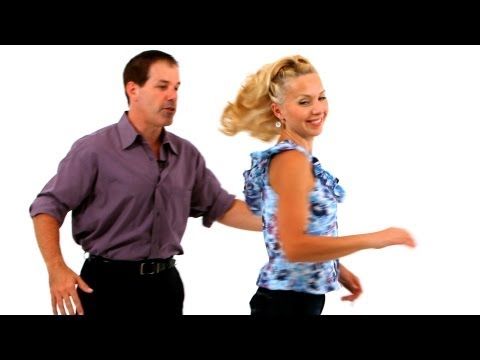
Therefore, it is necessary to additionally strengthen the stabilizing muscles. located in the lower part of the lower leg and affecting the position and stability of the foot. Stretch and shorten the foot, rotate the feet in a circle, roll the feet on the inner and outer ribs, stand on the toes and on the heels (no one allowed me to stand on the heels in class, and by the way, this is quite difficult and includes the front of the lower leg), through resistance to turning the foot in and out. There are many exercises, they are all simple and just require method and perseverance.
A very effective exercise for the muscles from the foot to the thigh is to stand on one leg for a long time, just on a full foot. 5 minutes or more. At the same time, try not to sag on your hip and not substitute your free leg. It also helps a lot to stand on one leg on a balance circle (a round disk that staggers).
Mandatory rule for standing on half toes : the weight must be over the big and forefinger of the foot and in no case should it fall on the little toes.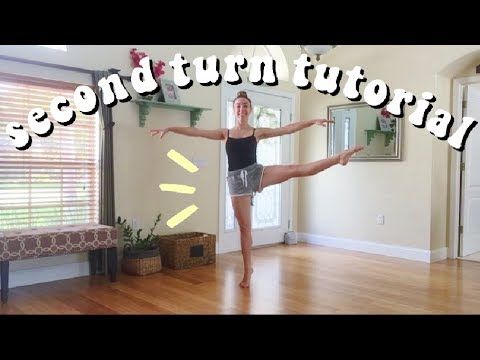 It also depends on the stabilizing muscles of the lower leg.
It also depends on the stabilizing muscles of the lower leg.
FOOT
The structure of the foot is very similar to that of the palm. She can be just as sensitive and mobile. Some professional dancers achieve this. An ordinary person hardly uses the muscles of the foot. Then the brain begins to perceive the muscles of the foot as one whole, the foot becomes like an iron shovel, rigid and inactive.
Due to the lack of development of the feet, the position of the ankle is disturbed, the softness of movements is lost (the knees also suffer from this, yes), other muscles begin to clog, which try to compensate for the weakness of the feet (usually calves, thighs).
Feet are the foundation on which our whole building stands. If something is wrong with the foundation, it will inevitably cause distortions in other parts of the body: in the knees, hips, back, it can even affect the position of the head. And therefore it is important to develop the feet, increase their mobility, strength, plasticity and sensitivity.
Dancers' feet are often very clogged, especially those dancing in heels. Attempts to maintain balance on poorly trained legs lead to the fact that the dancers try to “grab the floor” with their feet - they overstrain the muscles of the foot, squeeze their fingers. From this foot can reduce. This is especially evident in the training exercises of ballet and jazz-modern: we get so used to straining our feet that where they need to be relaxed, we generally forget to do it, and our feet start to feel pain right in the exercises. On the one hand, this comes from the wrong technique of the foot, on the other hand, from the underdeveloped muscles. Developed feet do not reduce. Well, the reasons may also be the lack of some microelements, etc. In social dance, a vivid example of tightness of the feet is when girls constantly dance on half-toes (in any shoes), practically without lowering their heels, and at the same time on bent knees. Looks ugly. This is how I dance here, it is very clearly visible: https://www.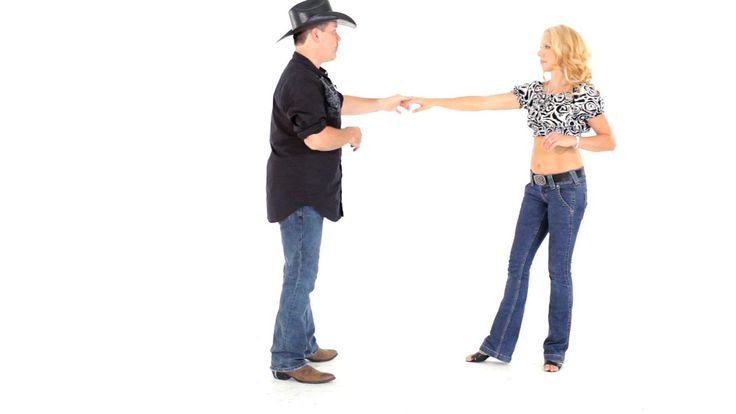 youtube.com/watch?v=lzpFeYB8nHc
youtube.com/watch?v=lzpFeYB8nHc
The foot development exercises are not only half toe raises. It is necessary to move the fingers up, down and to the sides in isolation, lift the napkin with the toes of the foot, stretch the outer and inner surfaces. Foot massage is very useful, and for this purpose I really like a massage ball with spikes (it should be elastic, a wooden massage roller will also work). At first, I roll the ball lightly, until I feel a pleasant tickle and tingle from contact with the skin. This relaxes the tissues of the foot and stimulates blood circulation, relieving chronic tension. When the foot relaxes a little, the sensations are dulled, I start pushing the ball through the foot in different places in order to act on a deeper level. So you can find especially painful areas and suppress them longer. After such a foot massage, the balance becomes better and the legs become softer.
Here is an example of how to wake up dormant foot muscles. I made up my own mind based on what I read.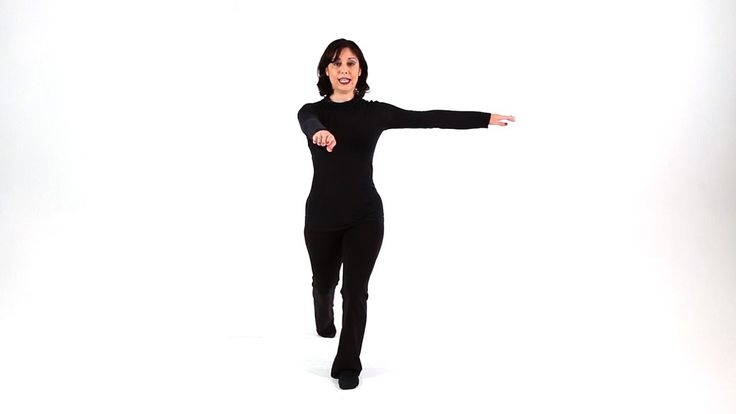 I was not given this in any class. Someone will not succeed at all, someone will feel new sensations in a couple of minutes.
I was not given this in any class. Someone will not succeed at all, someone will feel new sensations in a couple of minutes.
That's all for this article. This is a review article. Train, study your body, ask questions.
On VK you can send me your dance video for analysis, I will make a storyboard with errors and detailed comments, where you have technical errors in the sound, and where there are crookedness and obliqueness associated with the work of your body. I'll tell you what to do, how to work. I can record a detailed video answer with exercises for you. I wrote about it here: https://vk.com/wall599099_11435
I wrote this article for a very long time. I got a lot of different classes, I began to conduct thematic seminars about the work of the body in dance. While I was doing it, a lot of the material was sorted out in my head, and this affected the quality and coherence of this article. I hope that for many of you it turned out to be extremely useful and highlighted some things that you had not thought about before.